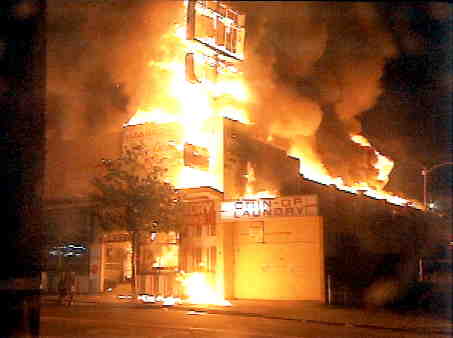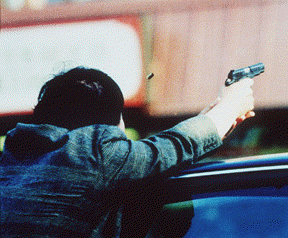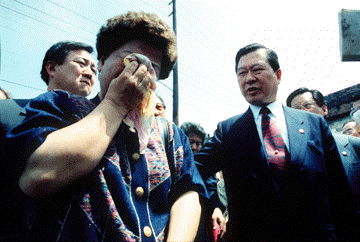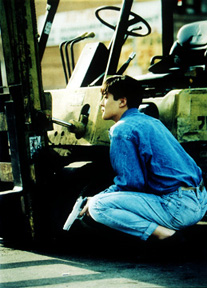

While the riots were a horrible time for everyone in the area, they were especially hard on one ethnic group: Korean-Americans. Consequently, for them, the date of April 29th is infamous. Sa-I-Gu (pronounced sah-ee-goo)--literally April 29th in Korean--was a date when Korean-American conceptions of America as Mi Gook (beautiful country) were destroyed. After all, many Koreans immigrated to the United States in order to better the lives of their family members; in order to do so, a large percentage became self-employed by opening up small corner markets and shops in the inner city of Los Angeles. In fact, the number of Korean there increased from 8,900 in 1970 to 143,431 in 1990. But when the last flames of the riots subsided, all that was left of their hopes and aspirations were ashes.
Although Korean-Americans only suffered one death during the riots--that of eighteen year old Edward Song Lee--they bore over half of the total property losses. In sum, due to the complete destruction of over 2,000 stores, they experienced over four million dollars in losses. When she was interviewed in the video Sa-I-Gu, Young Soon Han, an owner of a liquor store that was destroyed in the riots, admitted that she did know at whom to be angry: herself, the rioters, the police, or the entire country.

As Helen Zia wrote in her book Asian American Dreams, "The angry fracture lines and bitter divisiveness over those three days are evident from the divergent terminology that describe the event. To some observers, Sa-I-Gu was an urban rebellion, an expression of protest against the economic disenfranchisement of blacks and Latinos--with Korean merchants cast as the opressor class. Others called it a food riot, a conflagration of inner-city poor and their frenzied plundering of all shops in striking distance, many of which happened to be Korean-owned.... Most Koreans reject such references."
Moreover, before the Los Angeles riots, Asian-Americans were solely regarded as the "model minority": quiet, passive, and appeasing. However, after April 29th, they became more confrontational and less accomodating--they finally made themselves visible and began to protest the way that they had been treated. They began to make a change and directly affect their future.
In conclusion, the events of April 29th--Sa-I-Gu--and the Los Angeles riots as a whole caused long-term devastation and destruction for the Korean-American community. Only one-fourth of all stores that were destroyed ever reopened; in fact, out of all the women interviewed in the film, only one re-established her business. However, the rebuilding process afterwards had an empowering effect. Sa-I-Gu forced Korean-Americans to become more visible in the community and more vocal in their demands.

